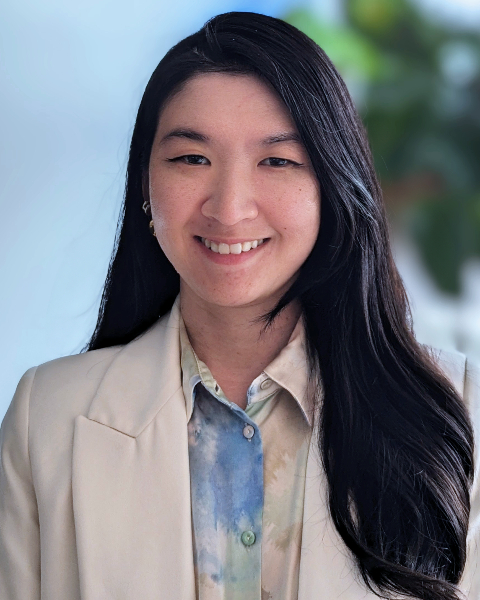PQA 03 - PQA 03 Gynecological Cancer, Pediatric Cancer, and Professional Development Poster Q&A
3538 - Animated, Multilingual, ADA-Accessible Videos to Improve Patient Education and Radiation Treatment Outcomes
Monday, September 30, 2024
8:00 AM - 9:00 AM ET
Location: Hall C
Screen: 23

Eulanca Liu, MD, PhD
UCLA Radiation Oncology
Los Angeles, CA
Presenter(s)
E. Y. Liu1, R. Cooley2, T. Craig3, C. Sheetz2, R. K. Chin1, and R. R. Savjani1; 1Department of Radiation Oncology, University of California, Los Angeles, Los Angeles, CA, 2UCLA School of Theater, Film, and Television, Los Angeles, CA, 3UCLA David Geffen School of Medicine/UCLA Medical Center, Los Angeles, CA, United States
Purpose/Objective(s): Most patients have limited to no prior knowledge of what radiation therapy for their cancer entails or what to expect. We thus developed animated videos that explain expectations of radiation, treatment effects, and interventions to help manage side effects, with the following overarching objectives:
Methods: We worked directly with an award-winning animator from the UCLA Animation Workshop in the Department of Film, Television and Digital Media to illustrate and build tiered videos. The initial scope of this library first covers treatment for head and neck (H&N) malignancies. We created the script and structure of each video with approval from the H&N service chief at our institution. Once scripts were finalized, the storyboard for each video was created on ToonBoom Storyboard Pro, combining the script with a given animation frame, broken down by the timing of each panel. Animation was then completed by our animator using Adobe Animate, and professional voiceover work was recorded for the audio track in a sound booth. The final video was edited to combine the animation with the audio track.
Results: Each step as outlined above was successfully performed, with the completion of scriptwriting, storyboarding, animation, and voiceover audio for the first step of a video “Skin Care Management” highlighting radiation dermatitis, which can be viewed here: www.rachel-cooley.com/ucla-oncology. The remaining aspects of the library of topics are actively under production; the framework includes “What is radiation treatment?”, “Controlling pain”, “Optimizing nutrition”, and “Reducing oral sores”. In addition, scripts are being translated into the top most commonly spoken non-English languages in LA County, with Spanish being the first priority. Spanish audio voiceover work, and closed captioning in English and Spanish, will closely follow.
Conclusion: The animated videos with language and accessibility adaptations will provide value to the radiation oncology community by easing patient apprehension surrounding radiation treatment, increasing patient adherence to toxicity management regimens to lessen the rate and severity of side effects, and strengthening trust and enhancing communication between patients and providers. The library will grow beyond H&N cancer to other sites of disease. They can eventually be transferred for use at other institutions through partnerships and academic collaboration, and tailored to match each provider and each communitys need.
Purpose/Objective(s): Most patients have limited to no prior knowledge of what radiation therapy for their cancer entails or what to expect. We thus developed animated videos that explain expectations of radiation, treatment effects, and interventions to help manage side effects, with the following overarching objectives:
- Prevent or minimize radiation-induced toxicity and help patients better understand radiation therapy by producing professional, animated videos that explain concepts in a clear and captivating manner
- Advance health equity and reduce disparities by improving accessibility and wider reach of the videos through translation of voiceover audio into other languages and English and non-English captions that adhere to Web Content Accessibility Guidelines (WCAG) for American Disabilities Act (ADA) guidelines
Methods: We worked directly with an award-winning animator from the UCLA Animation Workshop in the Department of Film, Television and Digital Media to illustrate and build tiered videos. The initial scope of this library first covers treatment for head and neck (H&N) malignancies. We created the script and structure of each video with approval from the H&N service chief at our institution. Once scripts were finalized, the storyboard for each video was created on ToonBoom Storyboard Pro, combining the script with a given animation frame, broken down by the timing of each panel. Animation was then completed by our animator using Adobe Animate, and professional voiceover work was recorded for the audio track in a sound booth. The final video was edited to combine the animation with the audio track.
Results: Each step as outlined above was successfully performed, with the completion of scriptwriting, storyboarding, animation, and voiceover audio for the first step of a video “Skin Care Management” highlighting radiation dermatitis, which can be viewed here: www.rachel-cooley.com/ucla-oncology. The remaining aspects of the library of topics are actively under production; the framework includes “What is radiation treatment?”, “Controlling pain”, “Optimizing nutrition”, and “Reducing oral sores”. In addition, scripts are being translated into the top most commonly spoken non-English languages in LA County, with Spanish being the first priority. Spanish audio voiceover work, and closed captioning in English and Spanish, will closely follow.
Conclusion: The animated videos with language and accessibility adaptations will provide value to the radiation oncology community by easing patient apprehension surrounding radiation treatment, increasing patient adherence to toxicity management regimens to lessen the rate and severity of side effects, and strengthening trust and enhancing communication between patients and providers. The library will grow beyond H&N cancer to other sites of disease. They can eventually be transferred for use at other institutions through partnerships and academic collaboration, and tailored to match each provider and each communitys need.
